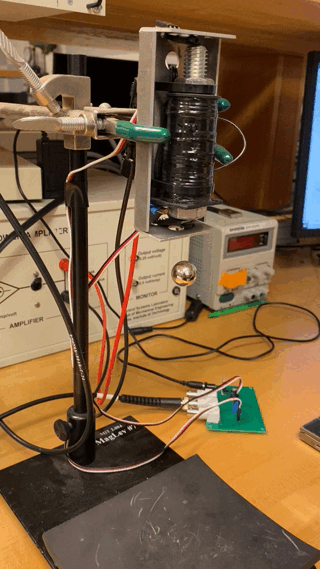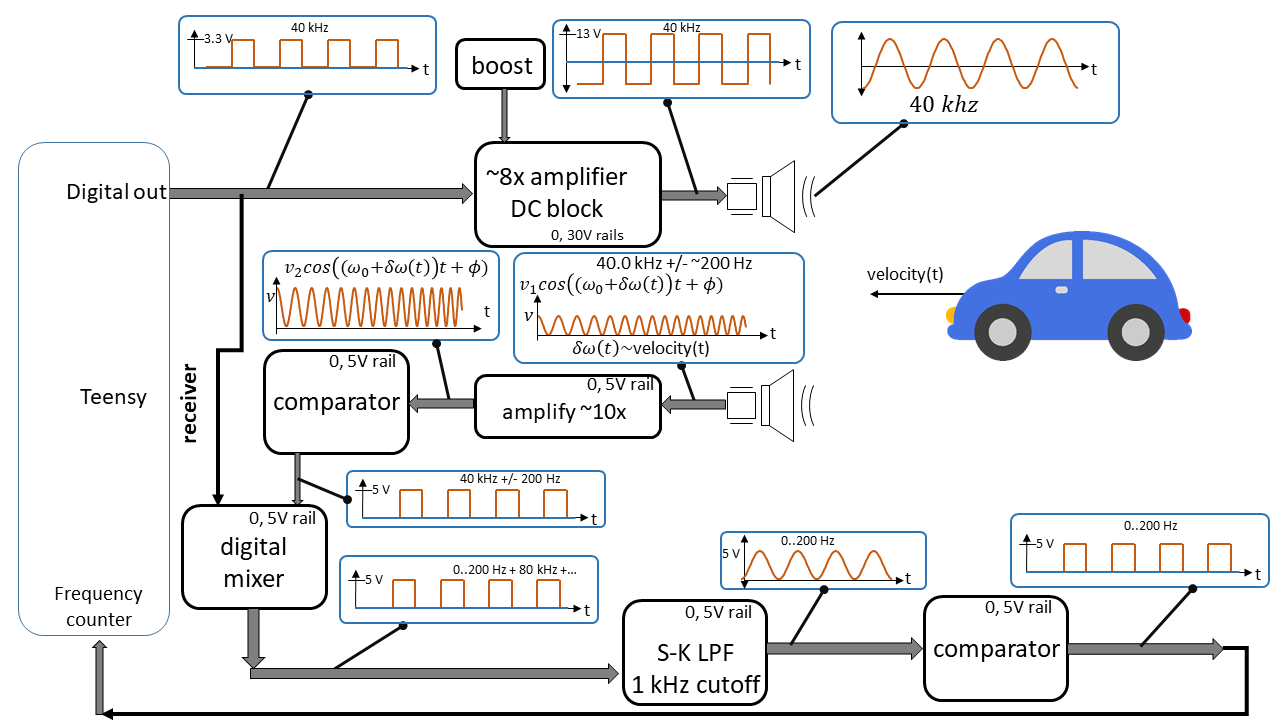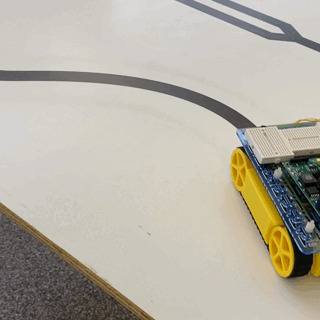Motor Velocity Controller : In this lab, I designed a PI controller to do closed-loop velocity control on this DC motor. The lab began with only implementing proportional control, and had us realize the elimination of steady-state error in a real system by adding the integral control after.

Active Gimbal Control : After modeling the DC motor plant as a second-order system and then making a simulation of the closed loop system in Simulink, we controlled the system with a PD controller to make it well-damped, increasing the system's stability to adequate gimbal standards. We then modeled the motion of the spring-mass system and set the gimbal-camera system to the same frequency so as to track the mass while it moved, as seen in the video





